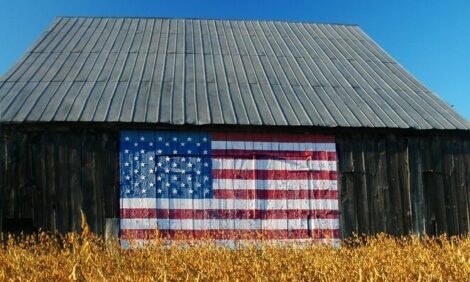CME: Changes In Seasonal Patterns Inevitable
US - Commercial red meat production in November totalled
4.26 billion pounds, down two per cent from last year but led by recordlarge
pork output of 2.09 billion pounds, writes Steve Meyer and Len Steiner.
The total for pork output was one per cent higher than last year and was driven by higher slaughter and slaughter weights which were equal, on average, to the record weights of the fall of 2010.
That pork production was high in November was no surprise. That it was higher than output in October is a bit odd since, historically, October sees the year’s highest level of pork production due to seasonal output patterns and the fact that there are no holidays during that month.
Average weekly production removes the impact of month length and holidays. The pattern is much smoother and shows November and December output is actually greater than that of October when the data are adjusted for those other factors. But the seasonal pattern of pork production is, if anything, even more pronounced in the average weekly output chart. Why is pork production so seasonal?
At one time, seasonal farrowing was a major driver. Many farmers farrowed sows once per year in the spring when weather warmed in the Cornbelt. Those March-May litters hit the market in October through December swelling slaughter runs so much that the fourth quarter once accounted for over 30 per cent of total annual slaughter and, due to higher fall weights, an even larger share of pork output.
But the days of pasture farrowing are, by and large, gone and we still see a dramatic seasonal pattern for three main reasons:
- Breeding performance is not consistent across seasons even in today’s high-tech sow units. Even with control of temperature, light and even sperm count in the semen used for artificial insemination, producers cannot completely reduce the impact of seasonal infertility that causes fewer sows to settle in the summer months and the litters from those sows to be smaller. Summer breeding trouble means a lower number of piglets in late fall and winter and lower slaughter hog numbers in late spring and summer. The opposite is true for fall/winter breeding, spring/summer farrowing and subsequent fall/winter hog supply.
- Pigs do not like hot weather and do not do well in it. “Sweat like a pig” is impossible since pigs do not sweat. Heat causes pigs to lay around trying to dissipate heat by panting. They eat less and thus grow slower pushing marketing dates from summer to late summer to fall. On the converse, pigs love cool weather and will eat heartily when the weather cools in the fall. This means daily gains improve and allows some pigs to reach market weight earlier in late fall and early winter. The result is a “bunching” of slaughter in October through December.
- The final factor is the impact of fresh corn. While there are many factors that impact average daily gain in the pig, the most important one is feed intake. Feed intake is the “action point” for temperature discussed above. Feed intake is also affected by the palatability of feed. Fresh corn tastes better than yearold corn from the bottom of a bin. This palatability factor adds to the impact of temperatures, helping to push market weights higher in the fall. More and heavier hogs mean more pork!
Further Reading
Further Reading










